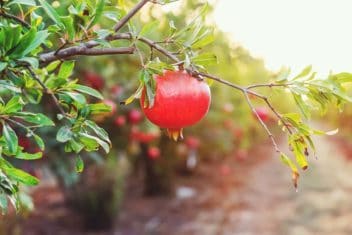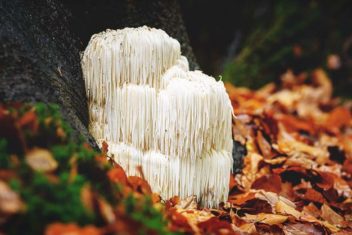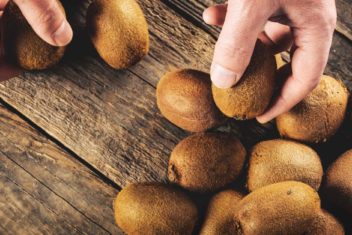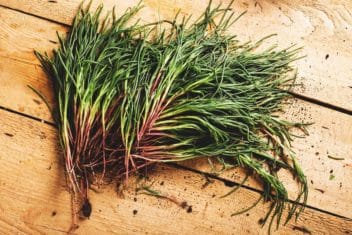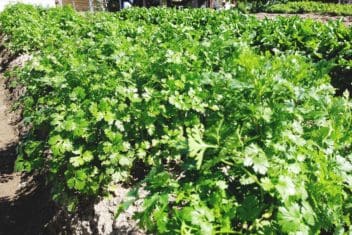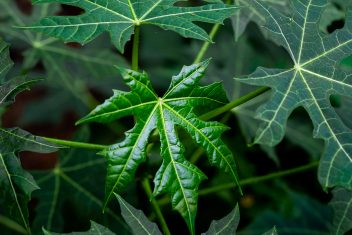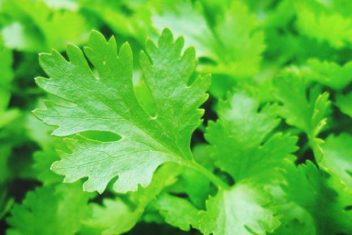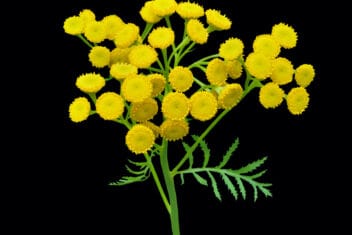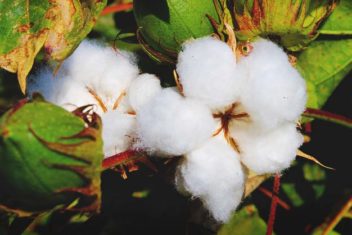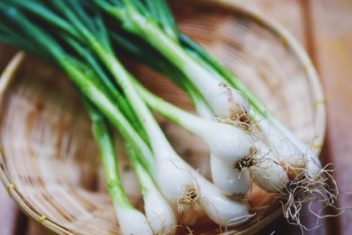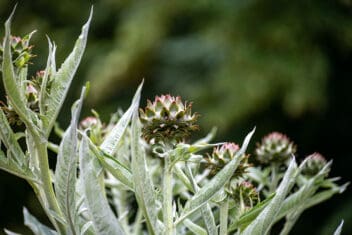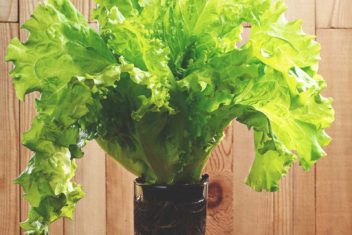Wan shen. Gai lan. Kai lan. No matter what you call it, Chinese broccoli is a tasty brassica worth growing in your garden. It’s isn’t as fussy as common broccoli, and the flavor is pleasantly unique.
Unlike broccoli, the leaves, stalks, florets are all commonly used in recipes for their somewhat bitter, earthy taste.
If you want a strong leafy green, perfect for many Asian recipes, or a replacement for spinach or broccoli, Chinese broccoli is the way to go.
What is Chinese Broccoli?
Even if you’ve never heard of wan shen, gai lan, kai lan, or Chinese kale (Brassica oleracea var. alboglabra), you’ve probably eaten it if you’ve been to Asian restaurants.
It goes by various names, depending on which country it’s growing in and whether the shop sells the veggies ready for you to eat or the seeds to plant.
You may have seen it served as wilted greens in a rich garlic and oyster sauce at Chinese restaurants. Chinese broccoli is perfect for wilting because it has broad, strong leaves and thick but tender stalks.

Gai lan is grown extensively in Asian countries, though it’s thought to have originated in the Mediterranean region.
Chinese broccoli is a brassica and related to other vegetables such as:
- Bok choy
- Pak choy
- Wong bok (Napa cabbage)
- Broccoli
- Kohlrabi
- Rutabaga
- Mustard
How to Plant Chinese Broccoli
Kai lan grows in zones 2 to 10 quite happily as an annual. It will grow in most climates, except extreme hot or cold.
While most brassicas bolt in the heat, Chinese broccoli can handle temps up to 95°F. Wan shen grows in full sun and partial sun, as long as it gets more than 4 hours of direct sunlight a day.
One of the nice things about Chinese broccoli is it isn’t fussy about soil, as long as you dig in well-rotted organic matter prior to planting. Aim for a pH of 6 to 6.8.
Chinese broccoli isn’t a big plant, growing anywhere from 18 and 36 inches high.
Planting Seed
Many places sell seeds for growing Chinese broccoli, including Amazon and many local retailers, so don’t worry about finding some for your garden.
Plant in spring as soon as you can work the ground. You can plant right through spring and into both summer and fall, depending on your climate. I like to succession plant my seeds so that I have a continual harvest all growing season long.
To plant the seeds, make a line in the soil about 1/2 an inch deep and place a seed every 10 inches. Rows should be 18 inches apart. Cover lightly and water well.
You can also use the scatter method and thin them out when the seedlings are bigger. There’s no need to be precise. Just scatter some seeds on the surface and cover lightly, then water well with a misting bottle.
You can also start Chinese broccoli seedlings in pots inside if you want to get the growing started before the spring weather warms up. Use a good quality seed raising mix and plant two seeds per six-inch pot or in individual seed raising pots.
Keep the soil moist, and when the plants are 3 inches tall, and the weather conditions are right, transplant to the garden.
From planting seed to harvest is about 60 days.
Container Planting
Chinese broccoli is happy growing in pots. I have mine close to the kitchen for ease of picking because I like to pick something and cook within seconds of harvest.
Plus, the plant looks good on the deck around your kitchen or other sunny spots.mUse a medium-sized pot and a vegetable specific soil mix made for potted plants.
Caring for Wan Shen

Although growing Chinese broccoli takes little care, there are certain things to do to make sure your harvest is plentiful all season long.
Fertilizer
Make sure to dig in well-rotted organic matter before planting. Once your plant has been growing for about 30 days, fertilize with a high nitrogen fertilizer.
Sprinkle it around the base of the plants and water well. You don’t need to use too much, especially if you’ve dug in well-rotted manure or compost at the planting stage.
Water Needs
Water plants well, especially through the summer season. Keep an eye on the leaves, and if they start to wilt or struggle, you’ve waited too long. Water deeply and stay on top of your watering.
Chinese broccoli is slow to bolt compared to many brassicas, but it still needs plenty of water. Don’t allow the soil in the pot or ground to dry out completely or it might bolt.
Once it bolts, Chinese broccoli gets fibrous and bitter.
To test, stick a finger in the soil. If it feels moist, like a well wrung-out sponge, that’s what you’re aiming for.
Weeding and Mulching
Make sure you remove any weeds as they pop up, as Chinese broccoli doesn’t like competition. The plant has shallow roots, and they need as little competition as possible.
Chinese kale also appreciates plenty of mulch to help retain moisture. A well-watered, properly mulched plant is better able to resist pests and diseases.
Pruning
You don’t need to prune your plants but remove and dead, dying, or diseased leaves.
Allow a couple of your plants to flower if you can because bees love them, and they will be attracted to your garden. That benefits all your plants.
Companion Planting for Wan Shen
Remove all weeds around your gai lan and plant the following companions:
- Cabbage
- Carrot
- Beetroot
- Beans
- Cucumber
- Peas
- Strawberries
- Marjoram
Don’t plant with Italian or curly parsley.
Common Problems and Solutions for Growing Wan Shen
Like most brassica, Chinese kale is susceptible to common garden pests, but with careful planning, you will be able to minimize their impact.
Remember to practice good crop rotation and don’t plant any brassicas in the same spot more than every three years.
Snails
Asian greens seem to suffer from snails more than any other pest. If you are growing Chinese broccoli, it’s likely you’ll encounter this pest.
I use snail bait. If you don’t like snail pellets, remove the snails manually at night.
Leafhoppers
Leafhoppers are a major pest in the garden. If they are on your plants, they are on probably many other vegetables, fruit trees, and possibly even your lawn.
All stages of this pest suck sap from the plant, causing the leaves to turn white and spotty. Insecticidal soaps can be effective, but it is best used before the leafhoppers become adults.
If I find a leafhopper infestation, I remove the vegetable and burn it or get rid of it in the garbage.
Cabbage Aphids
Like all aphids, cabbage aphids (also known as brassica aphids) love leafy greens. They appear on the undersides of leaves and suck sap, excreting honeydew. The honeydew attracts sooty mold.
Check out our guide on dealing with aphids to get rid of this pest.
Cutworms

The adult cutworm moth isn’t your problem, but the caterpillar is destructive, chewing through plants at the stem close to the soil.
Prevention is better than cure with cutworms. They appear more often in gardens where the soil hasn’t been tilled. Till well and loosen the soil before planting.
Remove weeds and any plant material rotting or diseased that has fallen in the garden.
I’ve used the cardboard inserts of toilet rolls to protect the stems. Make sure you bury the roll into the soil an inch, so they don’t burrow underneath.
We have a full guide for spotting and stopping this pest.
Harvesting Wan Shen

Harvest when the leaves have reached their mature size. To ensure your Chinese broccoli keeps growing, use a sharp knife to remove the leaves close to the stem and only take the leaves from the top 2/3rds of the plant.
Use them in stir-fries and any other dish where you would use spinach or broccoli.
My favorite way is to wilt them in a pan with garlic, sugar, a little rice wine and then dress with an oyster sauce.
You can harvest the entire plant using a sharp knife once the florets have formed.

